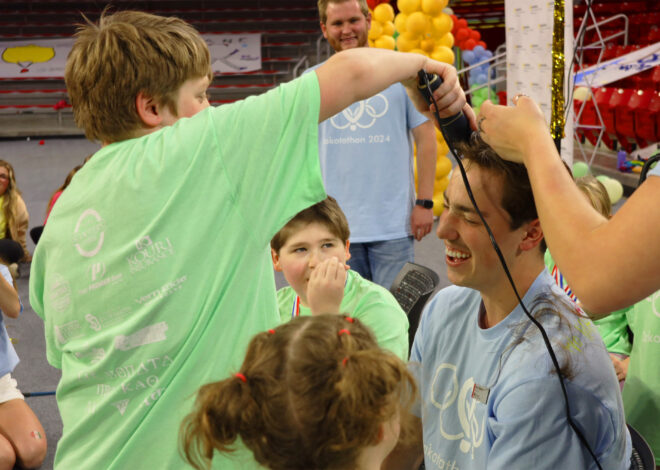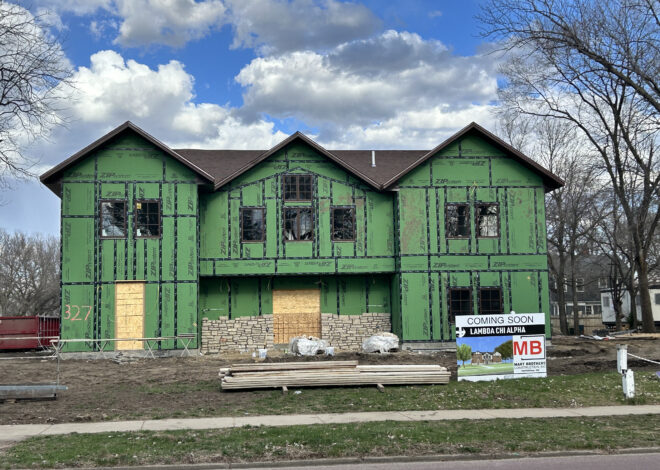S.D. university students among ‘the front lines’ in battle against vulnerability, abuse
South Dakota college students going into medical, criminal justice, education and social work need to know what they will face once they get out into the field.
Elizabeth Talbot, associate professor of social work, said these students will be on the front lines dealing with victims of human trafficking.
“The individuals who are trafficked are not treated well,” she said. “First of all, if they have any pre-existing conditions, such as diabetes, cancer, asthma or hypertension, those things don’t go away when you’re trafficked. They don’t get medication, they don’t get proper nutrition, and those create a lot of physical problems for individuals.”
To provide knowledge about the issue, a human trafficking conference will be held at the University of South Dakota from 9 a.m. to 4:30 p.m. Thursday at the Muenster University Center ballroom.
Rodney Hair, director of the Government Research Bureau at USD, has organized the event in order to provide students with the education they need.
“Students need to be aware of the possibility of things that can happen out there. It’s a good opportunity for them to learn firsthand from the people who are dealing with it right now and to talk to these people,” he said. “The educational piece that’s coming from this is invaluable. I want students to have an opportunity to ask questions and to interact with the people coming to this conference.”
Talbot said victims are also treated with extreme forms of physical and psychological abuse.
“Traffickers don’t take their slaves to the doctor unless they absolutely have to, and then they decide whether or not they’re worth it,” she said. “About 28 percent of individuals trafficked end up seeing a healthcare professional based on an emergency need. It’s very important for healthcare professionals as first responders to be able to recognize indicators that someone is not free and may need assistance.”
Second-year law student Nick Moser saw the need for awareness first hand when he served on the South Dakota legislature from 2008-2012. Moser served his first term on the judiciary committee, and saw the bills coming through.
“That’s when it became a real issue — hearing from parents and also young people who have either been victims or loved ones who were,” he said. “That has a huge impact on me and how I think about the issue. It puts a human face on it.”
Moser also advocates for awareness, because students will deal with the issue first hand after graduation.
“As a law student it’s important to understand — one, it’s an illegal activity that’s happening in our state. It’s something we should know about,” he said. “For a lot of those other degrees, this is something that has an impact on those occupations. Part of the reason students come out and get that college experience is to spend time learning about some of these things. That’s part of the reason you go to a liberal arts school — to have access to information and understand what’s going on.”
The need for students to be knowledgeable about helping the victims is more important than ever since human trafficking is a big issue in South Dakota, Talbot said, from her experience studying human trafficking and networking with practitioners.
“There is a lot of human trafficking going on in South Dakota, where human trafficking is impacted by the hunting season, the Sturgis Rally and we are getting some impact of the North Dakota oil fields,” she said.
Those who are most at risk, Talbot said, are adolescents, young women, single women with children, divorced women with children and Native Americans. The underlying, common denominator, she said, is poverty.
“There are a lot of poor people on reservations, adolescents are poor — not because they have poor families, but they generally don’t have any money, especially if they come from difficult family situations, they’re much more vulnerable to traffickers. Single women with children and divorced women with children are also vulnerable because they’re poor – they don’t really have finances to live adequately. It’s all over, but particularly with the young population,” she said.
Hair, who is on an educational task force in Sioux Falls to help combat human trafficking in South Dakota, said it’s difficult to enforce laws against human trafficking when people don’t know what it is.
“There is a lack of awareness in a rural state,” he said. “People might see it and not know what it is, or might not know how to deal with it. Like a lot of other crimes, there’s only a certain percentage that are actually brought to light or prosecuted.”
Hair also said there has been a South Dakota law on human trafficking for only a few years.
“Before that there may have been cases along these lines, but they were prosecuted for things like kidnapping. Now with people shedding light on the human trafficking problem you’re seeing more awareness, more enforcement and more prosecution,” Hair said
To move in the right direction when combating human trafficking, Talbot said South Dakota needs to change the age of consent, which is currently 16 years of age as opposed to 18 years of age, and the standards for public dress allowed at the Sturgis Rally, because the line between dress and nudity are skewed.
“With the South Dakota law, a 16-year-old can consent to becoming a prostitute, where in other states a 16-year-old isn’t an adult and cannot make that decision themselves,” she said. “They seriously need to look at the Rally and encourage that community to tighten up standards, even if it means making state laws to encourage it.”
Moser said the most important thing the general student population can do is continue to educate themselves on the issue and keep up to date on what is being done to combat the issue.
“You should want to be aware of it,” he said. “If you’re somebody who spends a lot of time in the areas where this is happening, maybe you can be a little more conscientious and potentially try to help the issue. Most South Dakotans are good people. If they know this is going on they’re going to try to do what they can to help, especially if it’s going on in the area where they’re living.”


